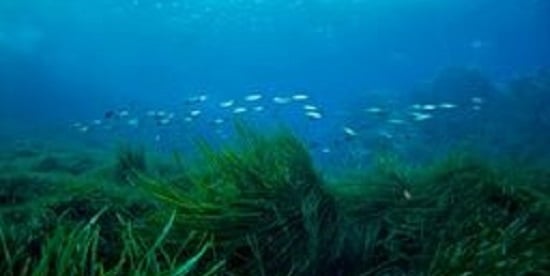Coastal ecosystems have high dollar value as nurseries for fish
Media release
A new study has, for the first time, put a dollar value on the contribution of Australia’s coastal ecosystems as breeding grounds for fish.
Researchers from Deakin University's Centre for Integrative Ecology in the School of Life and Environmental Sciences calculated that a single hectare of seagrass supports 55,000 more fish a year compared to seabed without vegetation.
Lead researcher, PhD candidate Holger Jänes, from Deakin's Blue Carbon Lab said this represented a commercial value of fish of up to $21,200 per hectare per year.
"Understanding the value of coastal ecosystems is critically important because healthy beds of seagrass, mangrove swamps and tidal marshes sustain larger populations of fish than unhealthy or degraded areas," Mr Jänes.
"Mangroves support 19,000 fish per hectare a year and tidal marshes support 1,700 fish per hectare a year."
Mr Jänes said while the most abundant fish across all three ecosystems were small, non-commercial species such as gobies and glassfish, the highest biomass production and economic value originated from larger, longer-lived fish that were regularly targeted by fisheries such as tharwine, bream and mullet.
"To better conserve, protect, restore and rehabilitate ecosystems degraded by human impact we must know their associated value to human well-being," Mr Jänes said.
"Coastal ecosystems face a range of threats from climate change, coastal development, invasive species and nutrient run-off from farms and other sources.
"Over the past decades, we have lost more than 180 km2 of seagrass in Victoria alone and this is a potential loss of fish production of millions of dollars.
"Across Australia more than 117 individual fish species use seagrass as a nursery area, 23 species use mangroves and eight species use tidal marshes as nursery areas."
Mr Jänes said the higher value of seagrass as a fish nursery, compared to mangroves and tidal marsh, was most likely related to the ease of access for fish through the softer grasses that generally remain under water.
"Mangroves are intertidal with complex root systems and tidal marshes in Australia are even less frequently inundated than mangroves."
Mr Jänes' research, Quantifying fisheries enhancement from coastal vegetated ecosystems, published in Ecosystem Services here is an output of The Nature Conservancy's Great Southern Seascapes programme.
The research was supported by Blue Carbon Lab, The Thomas Foundation, HSBC Australia, the Ian Potter Foundation, and Victorian and New South Wales governments including Parks Victoria, Department of Environment, Land, Water and Planning, Victorian Fisheries Authority, New South Wales Office of Environment and Heritage, and New South Wales Department of Primary Industries.
A novel animation of the research outcome is available here.

